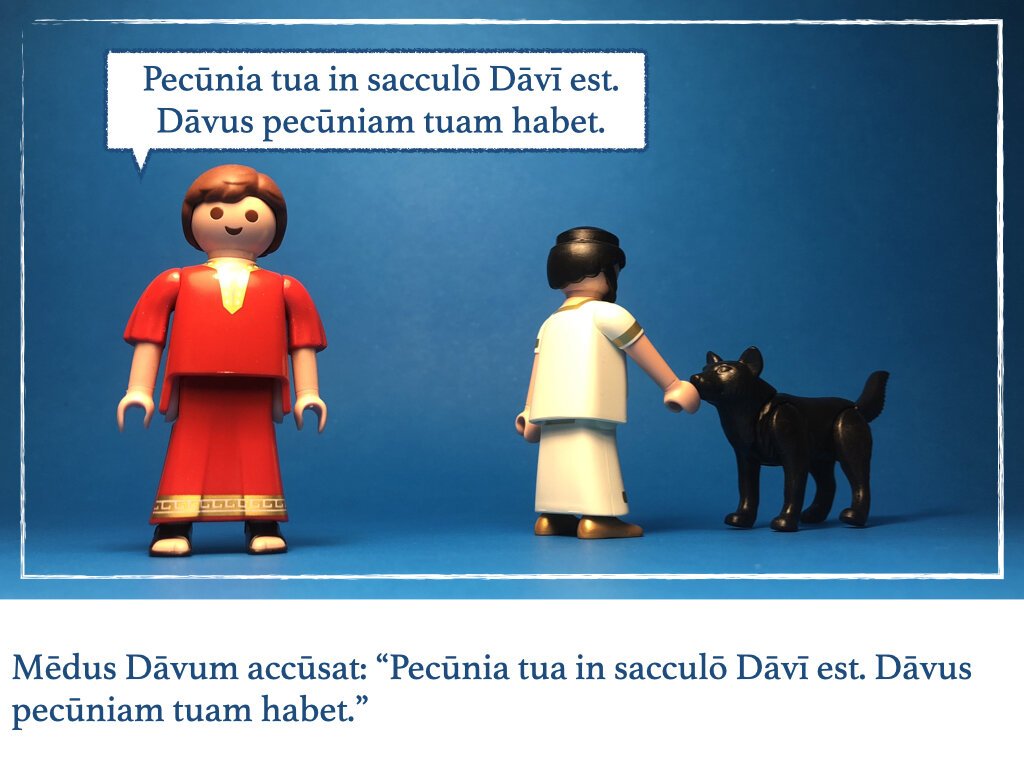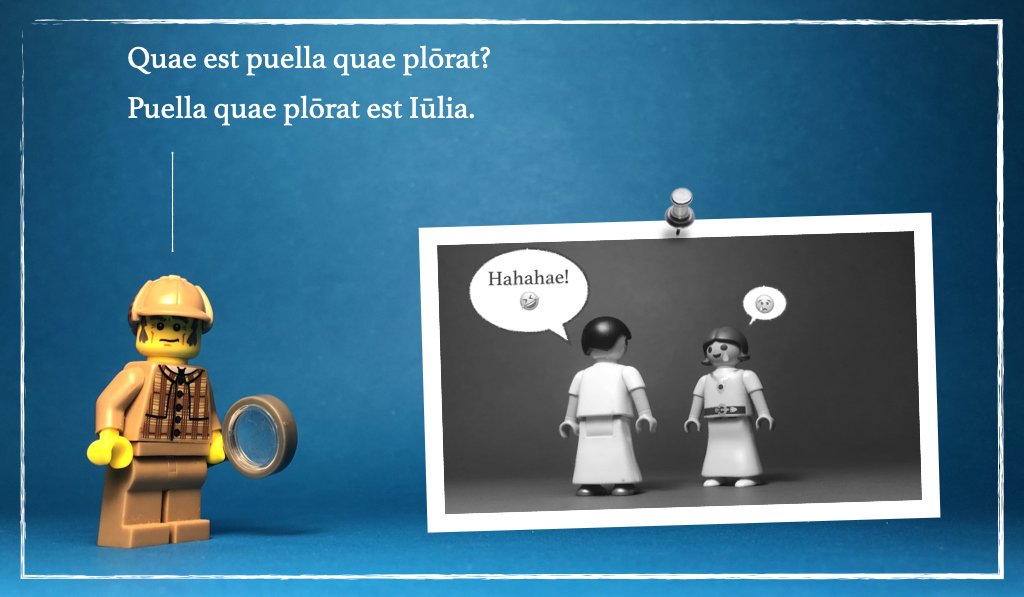Salvēte, sodālēs.
In todays lesson I want to draw your attention to four words that are used when discussing possession; meus (my), tuus (your), suus (it’s complicated) and eius (his, her(s) or its).
Let’s begin with the most straightforward, meus and tuus. This is a good time to remember that adjectives change their endings to match the nouns that they are describing. Read the eight sentences below, paying special attention to the possessive adjectives meus and tuus.
Mea fīlia est in Italiā. Aemilia meam fīliam videt. My daughter is in Italy. Aemilia sees my daughter.
Meus fīlius est in Italiā. Aemilia meum fīlium videt. My son is in Italy. Aemilia sees my son.
Tua fīlia est in Italiā. Aemilia tuam fīliam videt. Your daughter is in Italy. Aemilia sees your daughter.
Tuus fīlius est in Italiā. Aemilia tuum fīlium videt. Your son is in Italy. Aemilia sees your son.
Suus is also a possessive adjective. If Aemilia sees suam fīliam she is seeing her daughter. If Julius sees suam fīliam he is seeing his daughter. If Aemilia AND Julius see suam fīliam they are seeing their daughter. Suus always links possession back to the subject of the sentence, whoever (or whatever) that might be.
Fīlia Aemiliae est in Italiā. Aemilia suam fīliam videt. Aemilia’s daughter is in Italy. Aemilia sees her daughter.
Fīlius Aemiliae est in Italiā. Aemilia suum fīlium videt. Aemilia’s son is in Italy. Aemilia sees her son.
Last in today’s discussion is eius (his, her, its). Eius is NOT an adjective, but a pronoun, so its ending won’t change to match the noun it is describing. Unlike suus, eius does not link possession back to the subject, but refers to another person (or thing).
Fīlia Syrae est in Italiā. Aemilia fīliam eius videt. Syra’s daughter is in Italy. Aemilia sees her daughter.
Fīlius Syrae est in Italiā. Aemilia fīlium eius videt. Syra’s son is in Italy. Aemilia sees her son.
In today’s short reading, you will see the very first appearance of suum. You’ll also see some new verbs; adest, abest, adsunt and absunt. As long as you can remember the meaning of hīc, you’ll be able to understand these new verbs from the note in the margin.


































